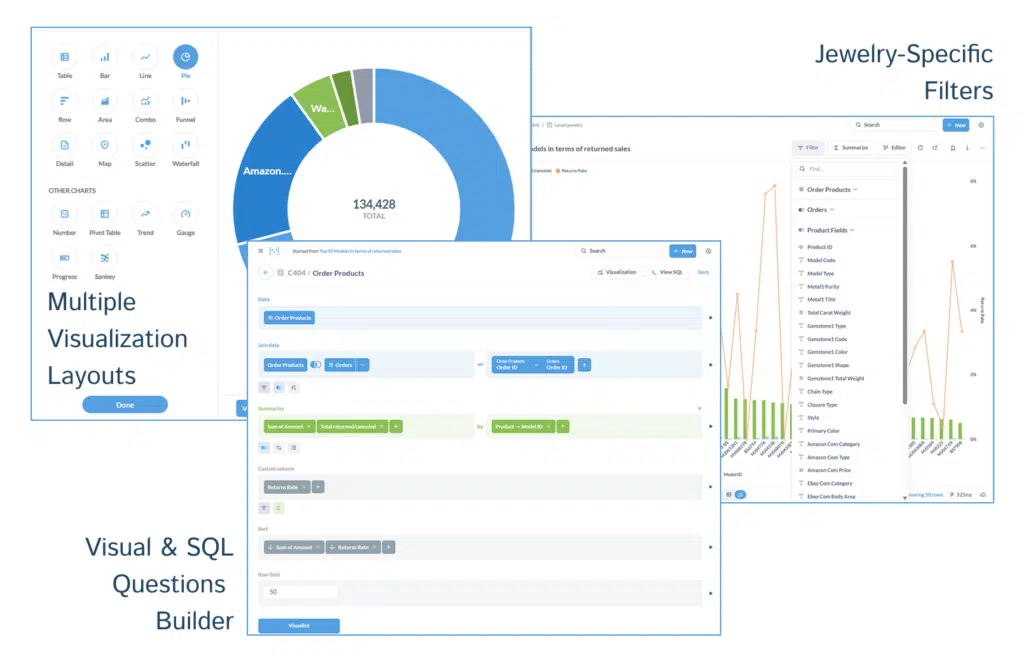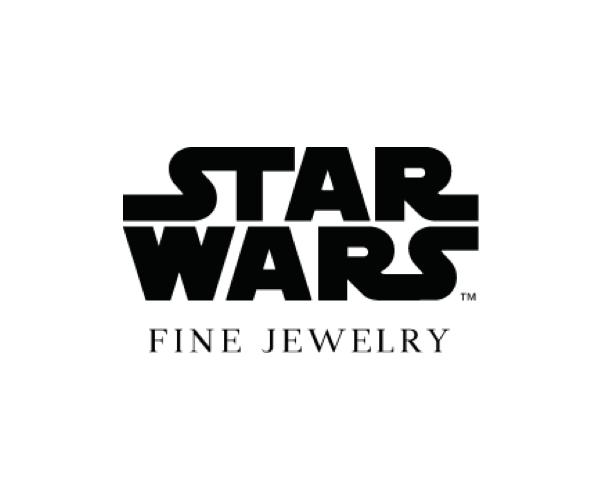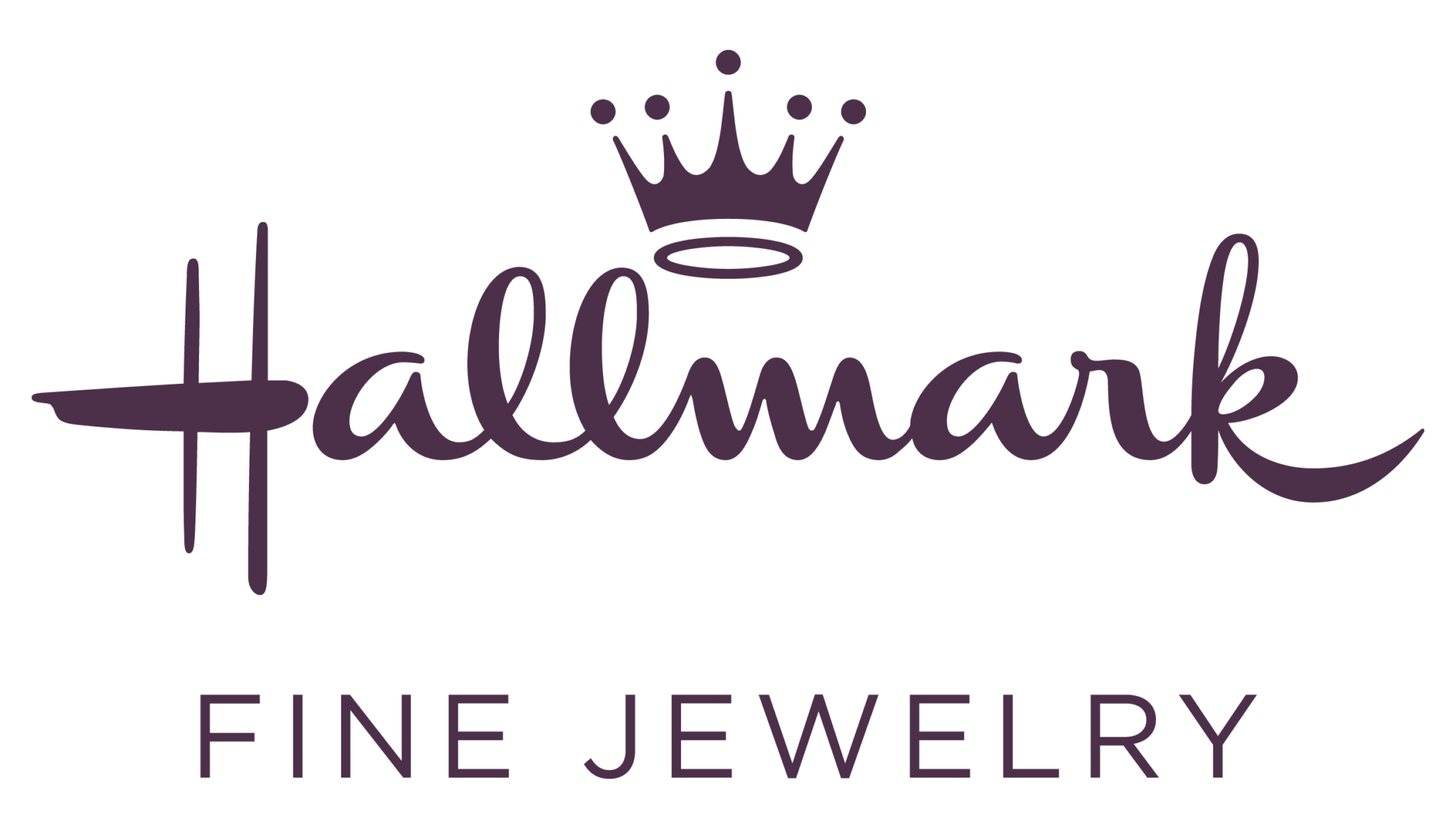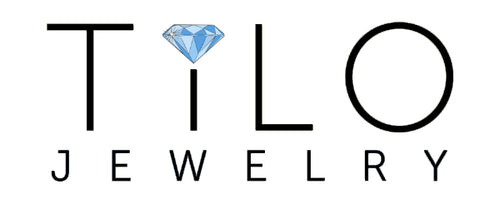Managing a jewelry business involves juggling various challenges—from tracking thousands of unique designs to analyzing customer preferences and managing inventory. Unlike other industries, the jewelry industry deals with unique, extensive catalogs that often contain thousands or even hundreds of thousands of SKUs, each with variations in materials, sizes, gemstones, and more.
Trying to make sense of this data manually is an impossible task. This is where Jewelry Business Intelligence (BI) tools come in. Specifically designed for the jewelry industry, BI tools provide insights that help businesses make smarter, data-driven decisions that optimize sales, reduce returns, and streamline operations.
Why Jewelry-Specific BI is Crucial for Jewelry Businesses
-
Large, Complex Catalogs: If you’re managing over 1,000 SKUs, manually tracking performance becomes inefficient. Jewelry catalogs are vast, and each design often has numerous variations (mainly metal types, gemstone combinations, and sizes). Trying to track performance manually can lead to missed insights.
-
Design-Level Insights: In jewelry, it’s not just about individual SKUs. Jewelry-specific BI tools focus on the design(model) level, helping you pinpoint which styles are performing well and which need attention. Besides that, jewelry designs are part of larger collections, and the performance of a design is more important than tracking each SKU variation.
-
Uniqueness of Jewelry Products: Unlike mass-produced goods, jewelry is personal and unique. Every piece is different, and what works for one jewelry business may not work for another. Because of this, relying on market data from external sources can be misleading, and the analysis has to be in-house.
Key Questions Jewelry-Specific BI Helps Answer:
-
What is the best-selling/most returned jewelry design in my catalog?
-
Which designs are driving sales and which are causing returns? Analyze sales and return data to decide which designs to promote or discontinue.
-
-
What metal type/purity has the lowest returns?
-
Are your customers more likely to return gold-plated items than solid gold ones? Jewelry BI allows you to pinpoint these trends, helping you reduce returns and focus on the materials your customers prefer.
-
-
What is the best-selling combination of metal and gemstone color for my earrings?
-
Do your customers prefer gold and sapphire, or silver and diamond? Identify the most popular combinations, allowing you to adjust your product offerings to match customer preferences.
-
-
Which vendor generates sales with the highest returns rate, and which other vendors can replace them?
-
Effectively switch to a supplier with better performance. BI provides visibility into vendor performance, narrows the search to see relevant manufacturers, and helps to decide who to make the next order from.
-
-
Out of my top 50 selling designs, which ones are missed on some of my sales channels?
-
If you’re selling well on your Shopify store but are missing out on sales on Amazon or Etsy, Jewelry BI tools help identify which of your top designs are underrepresented on each platform, ensuring you’re maximizing your sales across all channels.
-
Benefits of Jewelry Business Intelligence:
-
Make Data-Driven Decisions: Jewelry-specific BI tools allow businesses to switch from guessing to knowing. Needless to say, this leads to better decisions and sales outcomes.
-
Reduce Returns: Returns are costly financially and in terms of customer satisfaction. BI tools help jewelry businesses quickly identify problems and take corrective actions.
-
Optimize Inventory Management: Jewelry inventory management becomes complex when dealing with thousands of product variations. BI tools provide detailed insights into jewelry performance, helping businesses optimize stock levels. This means avoiding overstocking slow-moving items or understocking fast-moving ones.
-
Enhance Vendor Performance: Understanding your suppliers’ strengths is a fantastic opportunity to improve your performance. For example, you might discover that a particular vendor’s gemstones are consistently well-received, while another’s metal work leads to a high return rate. With this information, you can adjust your work with vendors.
-
Maximize Multichannel Sales: Jewelry BI tools provide insights into which designs are performing well across platforms, ensuring that your best-selling designs are available everywhere they need to be. This is crucial for maximizing sales on platforms like Amazon, Etsy, and your own website.
- Seasonal and Market Trends: Jewelry trends change with the seasons. BI tools help you track how different designs perform year after year, enabling you to plan seasonal collections and make decisions for future collection releases.
- Marketing efforts optimization: Insights into customer preferences and buying behaviors enable businesses to optimize budgets and create personalized marketing campaigns that resonate with specific customer segments.
When is Jewelry Business Intelligence Most Relevant?
-
Large Product Catalogs (1,000+ SKUs): Managing a large catalog means relying on memory or manual methods is no longer practical. BI tools simplify catalog analysis by giving you insights at the design level, helping you identify trends and gaps quickly.
-
Large Order History (Thousands of Orders): If you’re handling thousands of orders a month, it’s nearly impossible to analyze sales trends manually. BI tools help track large order volumes, making it easier to spot trends, understand customer preferences, and make adjustments in real time.
-
Expanding Sales Channels: As your business grows across multiple sales channels, BI tools help track product performance on each platform. You can identify underperforming designs on specific channels and adjust your strategy accordingly to maximize sales.
- Multi-Variation Jewelry. In some cases, design can feature 100s and even 1000 of variations. Naturally, even the basic the analysis of such items is not easy, and can only be made using BI tools.
-
Large Paid Marketing Budgets: When running a $10K monthly marketing budget, the investment BI will immediately provide a considerable ROI. Implementing the insights from BI into campaigns can lower TACOS in some cases by 70%!
-
High Return Rates: When returns become a significant part of your business, BI tools help you identify which designs or materials are causing issues, allowing you to make necessary adjustments.
The Importance of In-House Jewelry BI Analysis
Jewelry products and product lines are unique and personalized. Therefore, relying on competitors and generic market data isn’t enough. Jewelry businesses have to analyze their own catalog and customer base. With jewelry-specific BI tools, companies can gain valuable insights to make smarter, data-driven decisions.
Are BI tools only for the “big guys”? Do you have to be a manufacturer? Is it only for retail sellers? Absolutely not! Unlike significant investments in materials, production, operation, and educating your team, BI can be introduced in a matter of days, with a step-by-step adoption, as you build the proper habits of knowing your business better.





























